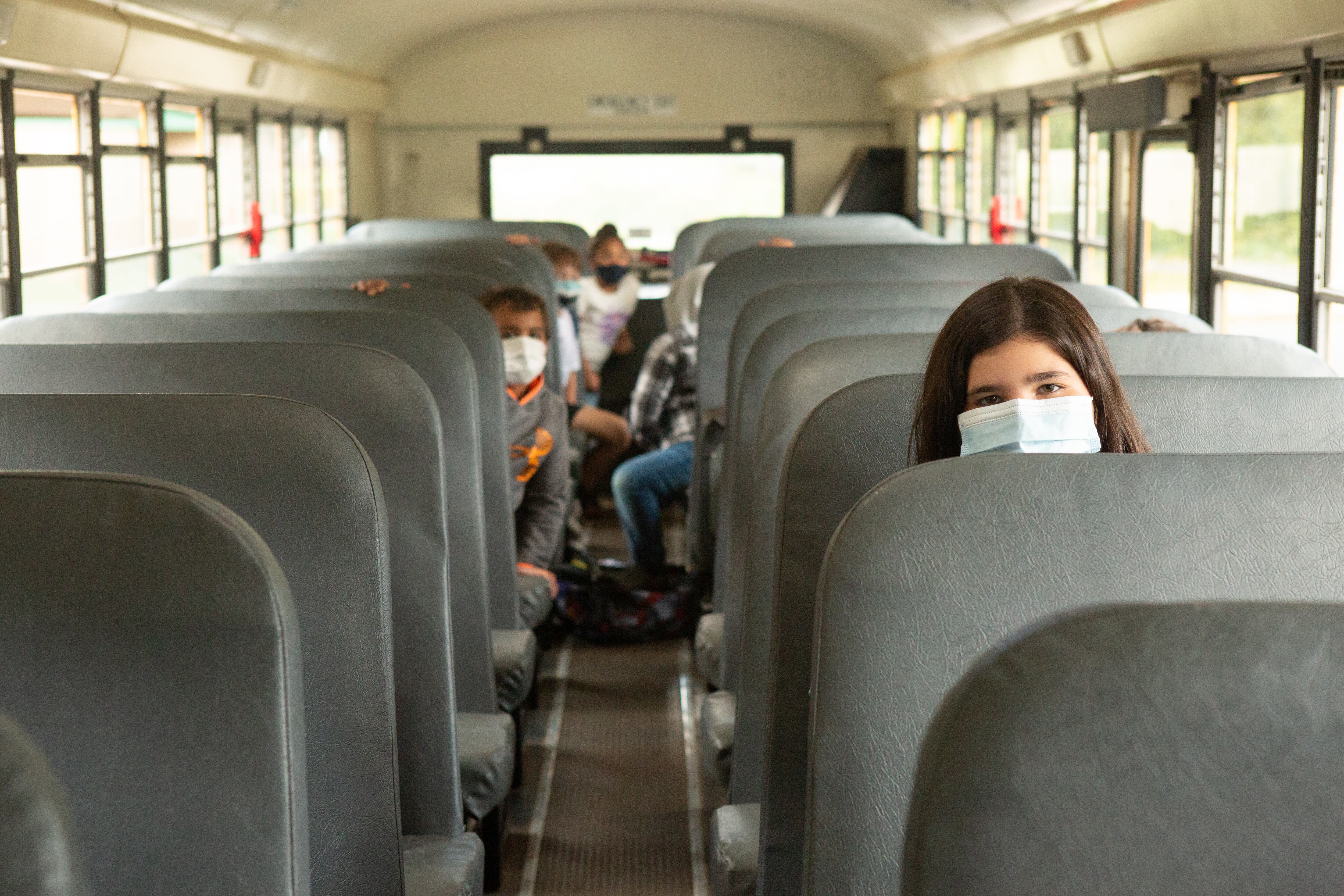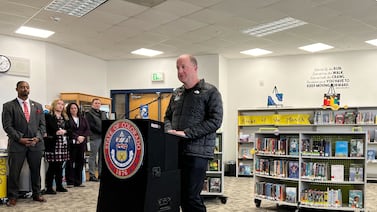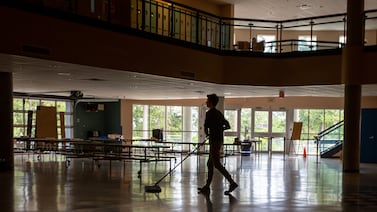As Illinois districts grapple with a school bus driver shortage, they are finding creative ways to fill vacancies: from using federal emergency funding for sign-up bonuses to hanging out at school bus stops to recruit drivers from neighboring districts.
Elgin U-46, the state’s second-largest district, even tried to lure job applicants with a summer recruiting event where curious members of the public could practice driving a bus in a parking lot.
Even so, the district, where the school year started on Aug. 16, still has 40 bus driver vacancies.
“Every district is struggling,” said Beth Lapa, the assistant director of transportation.
Illinois districts, in the midst of reopening schools after in-person learning had been suspended for over 18 months due to the coronavirus pandemic, are now also facing a bus driver shortage that has hit districts across the country
According to a national survey by the National Association for Pupil Transportation and two other school transportation organizations, half of the almost 1,500 school transportation coordinators surveyed described their driver shortage as “severe” or “desperate.” About 78% said the shortage is getting “much worse” or “a little worse”
A number of factors have contributed to the shortage, the survey found, including route changes because of COVID-19, a lengthy hiring process, and the rate of pay for drivers.
In Illinois, a wave of early retirements and resignations contributed to the shortage, Lapa said. Some bus drivers burned out after an increase in summer routes due to summer school. Vaccine mandates may also be impacting demand, she said.
The shortages have already impacted thousands of students in schools around the state.
On the first day of school in Chicago, that district was left scrambling to find transportation for almost 2,100 students because 10% of bus drivers resigned. The district plans to give $1,000 to families to cover the first two weeks of school and the mayor said she reached out to Uber and Lyft for help. Some school bus driver companies that work under contract with Chicago are offering sign-up bonuses of as much as $3,000.
It’s not just a big city problem. In central and southern Illinois, districts have flagged the need to fill permanent bus driver positions and substitutes.
Bloomington District 87 has 12 vacant bus driver positions. McLean County Unit 5 is looking for substitute drivers. Granite County School District 9 is down 32 bus drivers, with many drivers calling out sick.
In the west suburbs of Chicago, Bellwood School District 88, which serves about 2,300 students, has given some parents gas cards, while mechanics employed by the district have also stepped up to drive bus routes.
Transportation has always been a complex issue for Illinois districts, but the pandemic has made it worse.
Schools are mandated to provide transportation to students in foster care, those facing homelessness, and students with disabilities. In Illinois, some districts are required to provide free transportation to all students; others must offer service to students who live more than one-and-a-half miles away from their school.
Bellwood has seen bus routes running behind schedule, according to Victoria Hansen, the assistant superintendent of curriculum and instruction. The district has to create bus routes and stops for six suburbs where students live — Broadview, Maywood, Bellwood, Hillside, Melrose Park, and Stone Park. Already, the school district has seen
Another concern for suburban school districts is meeting transportation requirements for students with Individualized Education Programs. All Illinois districts are responsible for providing bus service to therapeutic day schools and picking and dropping students at their home address instead of a bus stop.
Hansen said that wondering if the school buses will run on time keeps her up at night.
“When I say every minute counts and every moment matters with transporting students,” said Hansen, “it truly does.”
The Illinois State Board of Education has sent guidance to districts on how to spend federal emergency funds to deal with the bus driver shortage. Districts can use funding for bus recruitment activities, sign-on bonuses, and stipends to parents who transport their children.
The state board also suggested that school districts create before- and after-school programs for working parents whose work hours clash with drop-off and pick-up times and work with community organizations to transport students to after-school programs.
One of the state board’s other recommendations is for districts to use federal funding to contract with local mass transit agencies. That, however, may not work for the state’s estimated 500 rural school districts.
While some large and suburban school districts can turn to public transit to transport some students, rural school districts rely on bus transportation, according to Dave Ardrey, executive director of the Association of Illinois Rural and Small Districts.
“Communities and schools rely on buses. They drive hundreds, if not thousands, of miles a week to move kids,” said Ardrey. “Buses are critical.”
Cassie Walker Burke contributed to this report.






